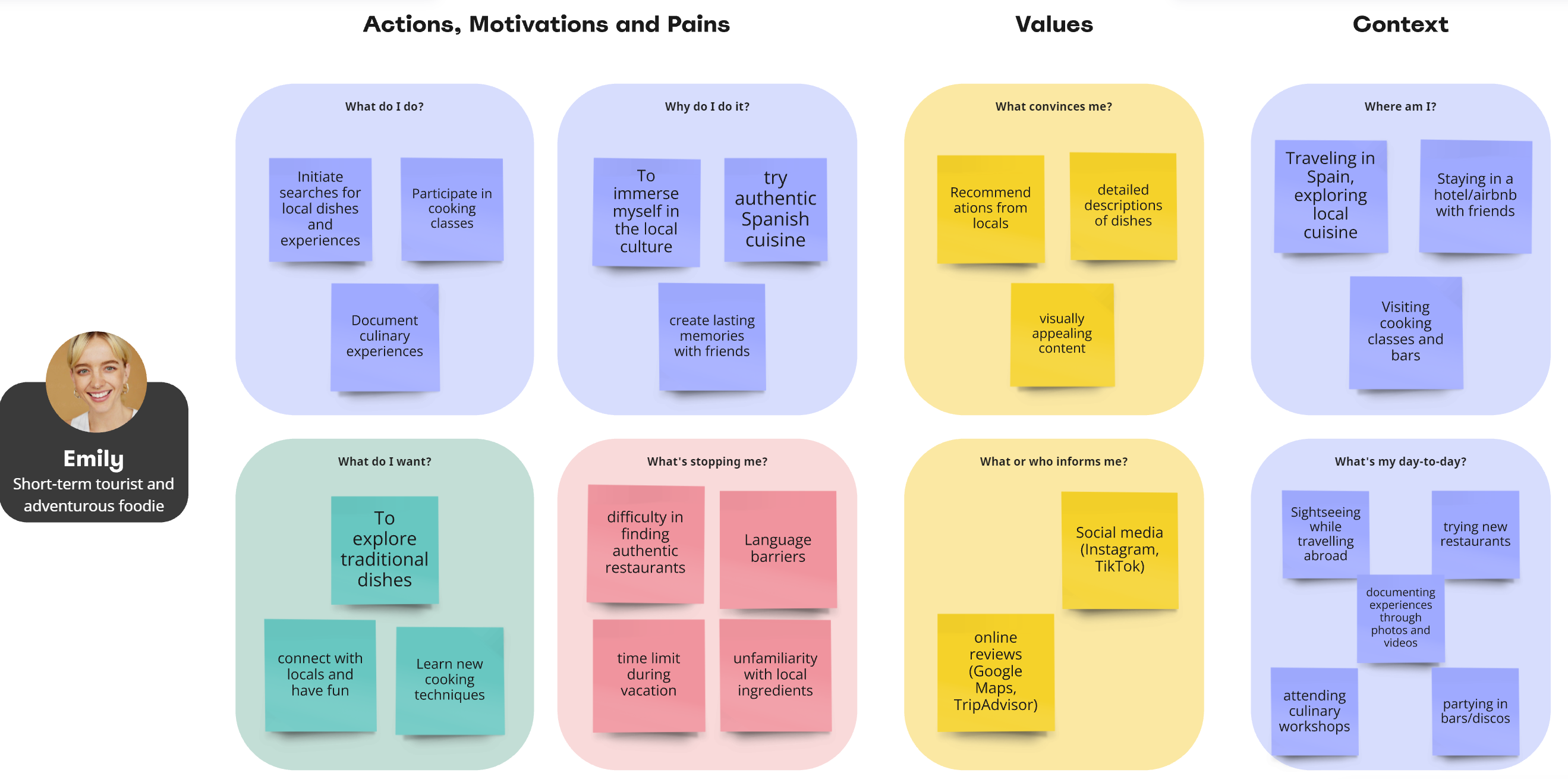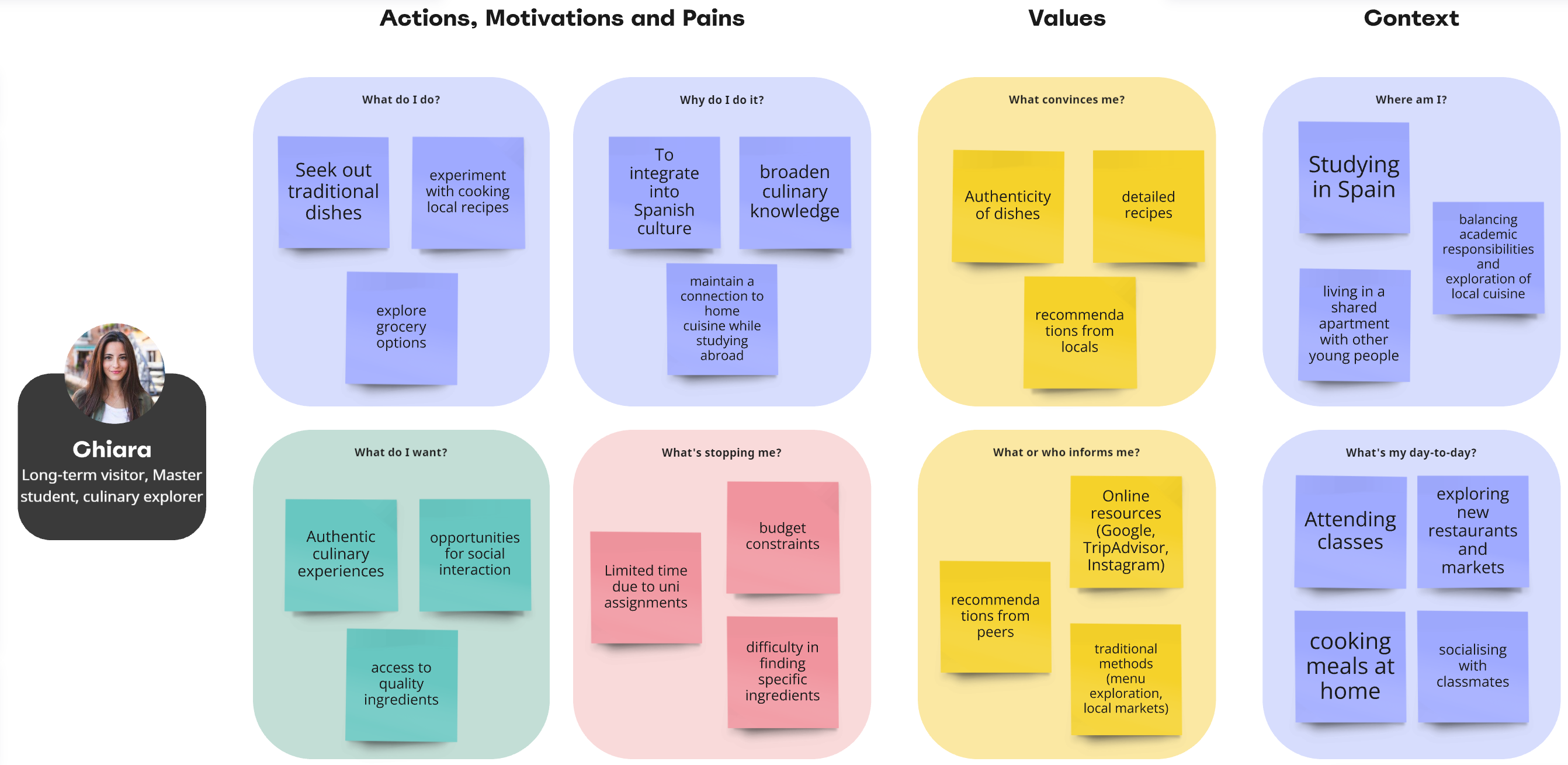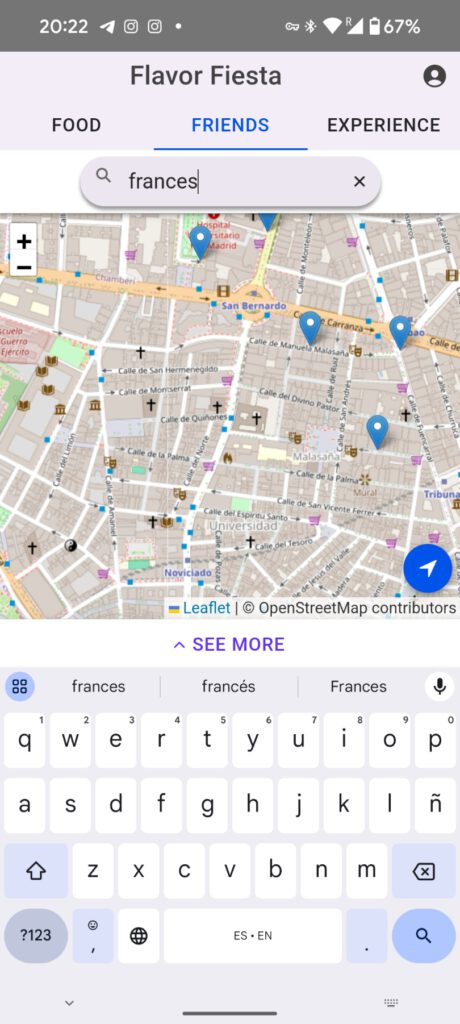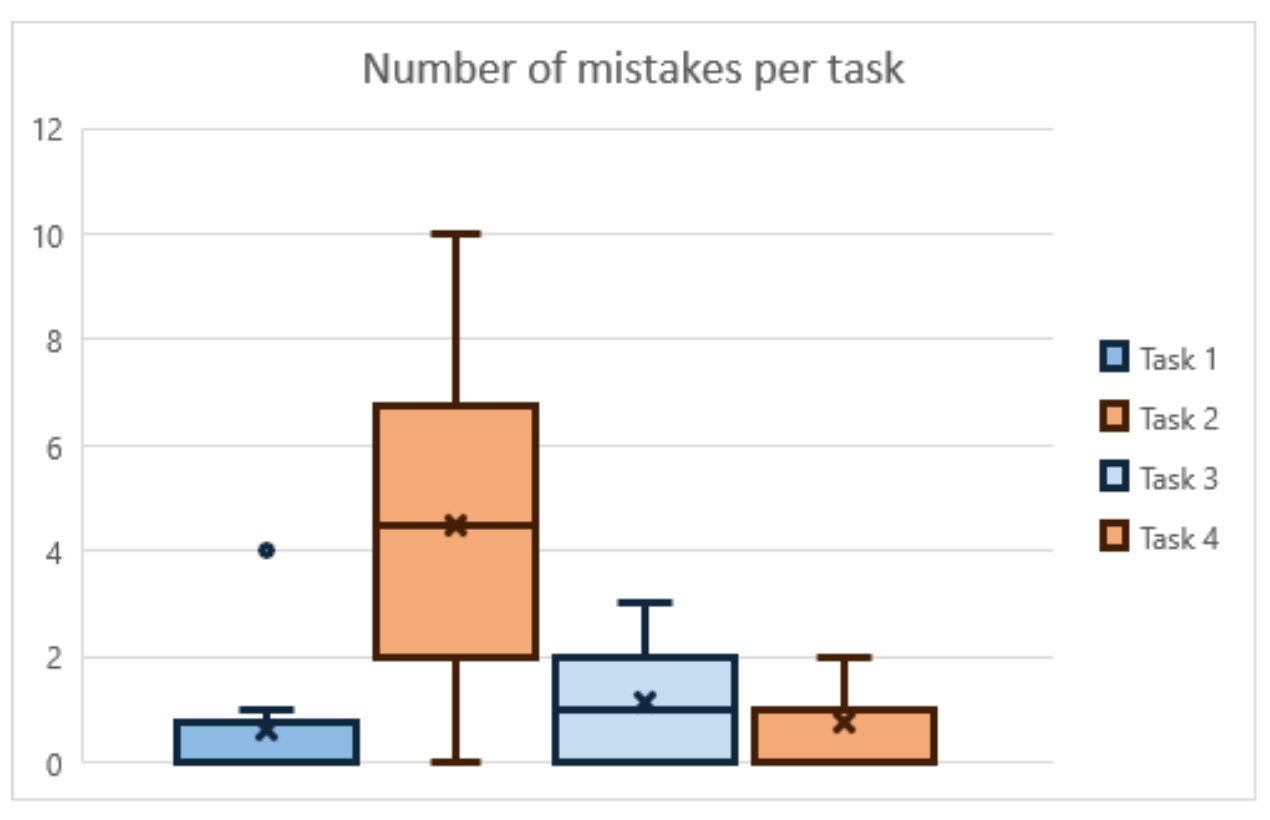Overview
Flavor Fiesta is a system designed for food enthusiasts exploring Spain. It is a platform where foodies can discover local restaurants, markets, and cooking classes. The platform focuses on social interaction, allowing users to connect with others who share similar the same interest for food.
Objective
Project based subject called Human Computer Interaction project. The aim is to follow an user-centered approach to design a system following all the steps to put in practice our knowledge: user research, low fidelity prototypes, high fidelity prototypes and user testing.
Users
After user research, 2 personas emerged:
– Emily, a short-term tourist that wants to participate in food related events
– Chiara, a long-term student living abroad that wants to try and cook new dishes
Pain points
• Users struggle to find information about dishes, ingredients, and preparation methods.
• Users find it difficult to visualize the recipe without proper photos and videos.
• Users face challenges navigating menus in non-English speaking regions.
• Budget constraints: Need to find affordable dining options.
Users seek opportunities to connect with others and share food experiences.
• Users prefer recommendations from locals or peers over generic advertising

Done in collaboration with: Alex Debertolis and Kristina Todorova.
Process
User Research
User Analysis
We performed an analysis of the contextual inquiries, ethnographic observations and the interviews. These were some of our user needs: Detailed Information, Visual Content, Language Support, Price Consciousness, Social Interaction, Trustworthy Recommendations, Map Services


Emily is a tourist who wants to try new foods and learn about different cultures. She uses the internet and asks locals for recommendations. She likes eating out and taking cooking classes. Chiara is a student who lives in the country for a long time. She loves to learn how to cook traditional dishes. She doesn’t have much time and it’s hard to find the right ingredients. She likes to try new foods and meet other students.
Low Fidelity prototypes
Emily uses the app on her smartphone to directly interact with the map
interface and discover nearby options, Chiara uses the app to browse
through content shared by the community. The main difference lies in
the interaction style: Emily uses direct manipulation on a map
interface, while Chiara navigates through menus and visual content.
Results
High Fidelity Prototype - Application - Task 1




High Fidelity Prototype - Application - Task 2




Usability testing




The overall SUS score was 73.75, showing good usability but also room for improvement to achieve excellent standards. User experience, as measured by the UEQ, showed positive results with noted deficiencies in design consistency and interactive feature optimization. Key usability issues identified include poor visibility of some interactive elements, confusing map integration, and an inflexible search function.
